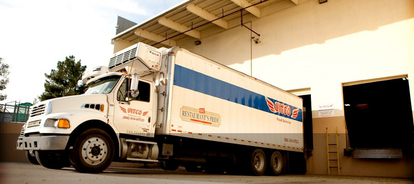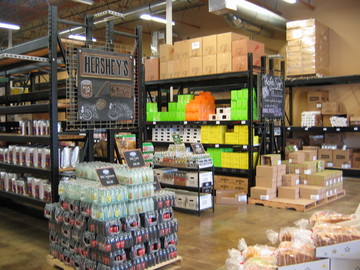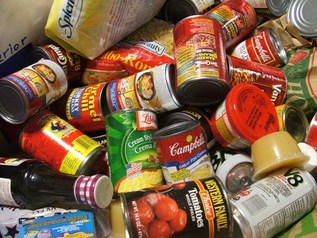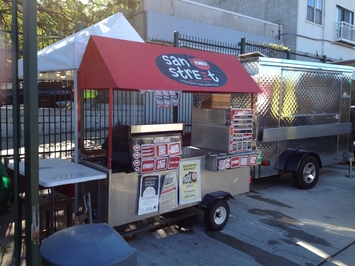 Image From: http://www.ifdaonline.org Image From: http://www.ifdaonline.org A moat is defined as a broad and deep ditch which may be filled with water or dry, and historically surrounds a town or castle to offer it a primary defensive line. On the other hand, an economic moat is a technical term that was popularized and invented by business tycoon Warren Buffett. According to Buffett, this term talks about the ability of a business to keep their competitive advantages over the international food distributor and the competition to safeguard its market share and long-term profits from other companies that offer similar goods and services. To make a long story short, the economic moat is a factor that can possibly provide a sustainable competitive advantage to an industry. Here are some ways for an enterprise to get an economic moat: Low Cost Manufacturing The corporations that can deliver their services or commodities at an affordable cost (normally because of captive raw material sources or economies of scale), have a unique competitive advantage since they have the power to undercut the competition on price. Examples include coal mines or iron ore mines. High Switching Expenses Switching expenses refer to the one-time costs or inconveniences that the consumers go through when they are transferring from one service or item for another. The best examples of this include banks, ISPs (Internet Service Providers), and telecom corporations. The Network Effect This effect takes place when the value of a specific service or product goes up for the existing and new customers as more consumers use it. Excellent examples of the Network Effect are social networking sites such as LinkedIn or Facebook, and the networks that credit cards use. Subtle Assets A handful of firms have an edge over their competition due to distinct subtle, intangible or nonphysical assets which involve an international food distributor. These intangibles cover things like geographic advantages, brand names, government approvals, and intellectual property rights.
 Image From: http://www.xenfore.com Image From: http://www.xenfore.com Wholesale food dispersal teams are people who work like sales brokers between the merchants and the manufacturers, or in some instances, individual clients. In general, these groups who work in the business of wholesale food are stationed in a food storage building or warehouse. Wholesale suppliers deliver a vast assortment of food items every day, and these include meat and dairy products, fruits and vegetables, seafood, frozen foods, and the confectionaries (examples include chocolates, candies, and ice cream). The wholesale food distributor can also specialize in a particular food product, and can also be located in the current marketplace. Trader wholesalers normally do business by selling supermarket goods, while the systems distributors are usually experts in special items like tea, coffee, seasonings, and spices. Some specialty wholesalers have also appeared on the scene, concentrating on the dispersal of poultry or dairy items. As mentioned earlier in this post, these people who work in wholesale food generally stay in a warehouse and do not normally interact with walk in visitors since the items that they sell are not always accessible or on display. The majority of clients make plans for an appointment so that the wholesaler is given a chance to provide a full presentation of the merchandise that they sell. Clients are normally given a number of processing choices for any bulk orders they may have. The wholesaler would normally take care of these tasks, which involve the packaging and cutting, and even the seasoning of the products that are needed to meet the order. Aside from this, if the buyer chooses it, the food items can be bought minus the processing part. For the veteran wholesale food distributor, these situations are considered normal with the sellers who decide to package and process their own food items, either to reduce their operational expenses or because they use their own distinct methods of promoting their products.
 Image From: http://jclocalaid.org Image From: http://jclocalaid.org The Philippine government has been executing a Food Assistance Campaign as a temporary calming invention for the growing number of its children who are malnourished. Complementary feeding has been a popular and effective strategy that has been implemented in nations that are concerned with the issue of malnutrition. The Food Assistance Campaign reportedly covers an average of 0.3 million lactating and pregnant women, 1.2 million schoolchildren and 1.3 million preschoolers per year. Critics are claiming that food assistance is a waste of resources, a temporary solution to the problem, and instigates a mentality where people will not work hard and just expect hand-me-downs. However, based on the statistics of a Philippines food distributor, this program may have advantages in terms of political impact, social or behavioral aspects, and nutritional factors. The instances where food assistance had a positive effect on the social and behavioral factors of Filipinos include changes in practices and attitudes of child care providers, and more mothers learning more about the importance of child feeding or joining community services. As far as positive political impact is concerned, it involves the demonstration of how concerned the government is for a big majority of the population. The decision of the government to implement a food assistance campaign depends on the purpose of the program. If the primary goal is to revitalize the mothers and the children who are malnourished, it is best to perform supplementary feeding. On the other hand, if the goal is preventive (referring to helping the children who are at risk of stopped growth due to their situation in life, such as living in a house with limited resources), increased usage of food from sources such as food-for-work, food subsidies or food stamps can dramatically enhance welfare. Regarding the subject of supplementary feeding campaigns, the nation has employed different schemes for dispersing food rations thanks to the advice of a Philippines food distributor. The government needs to address the concern of the proper times for feeding because the nutrition workers regularly have a hard time encouraging mothers to bring their kids to the feeding centers.
 Image From: http://upnorthbusiness.files.wordpress.com Image From: http://upnorthbusiness.files.wordpress.com The main objective of choosing a food dealer for your mobile food business is to locate one that will deliver fair trading prices and products of top quality. The best part about this practice is that your business has the chance to collaborate with a number of food traders, but keep in mind that there are instances where your firm needs multiple dealers for your merchandise, particularly produce and meat. The good news is that you might be able to locate food suppliers who can offer most of your supplies from one facility. Major national dealers can deliver big discounts on the prices of their goods since they disperse a lot of merchandise. While their small orders have the tendency to be too much for one mobile food business, you can befriend other franchises in your location to place enough bulk orders to comply with their minimums. You probably will not be able to buy everything you need from one dealer because monitoring many invoices will waste your effort and precious time. Try to achieve your requirements with the least number of suppliers. So that you will not take too long in searching for a particular trader, here are some additional tips for locating prospective suppliers: Use the power of the Internet You can find almost everything you need for your business by performing online searches. Employ online business directories which catalog dealers and even locate traders according to the products that you are searching for. A lot of these websites allow you to input your zip code so that you can narrow your specific searches within your locale. One important advantage of using internet directories is that they regularly give information on traders who sell items at competitive rates. Go to trade shows about the restaurant industry Food suppliers can get useful information on the different services and products that a dealer showcases when they attend these conventions. You can get trader literature, and have the chance to speak to the representatives of restaurant suppliers.
|
 Image From: http://www.ifdaonline.org
Image From: http://www.ifdaonline.org 


 RSS Feed
RSS Feed